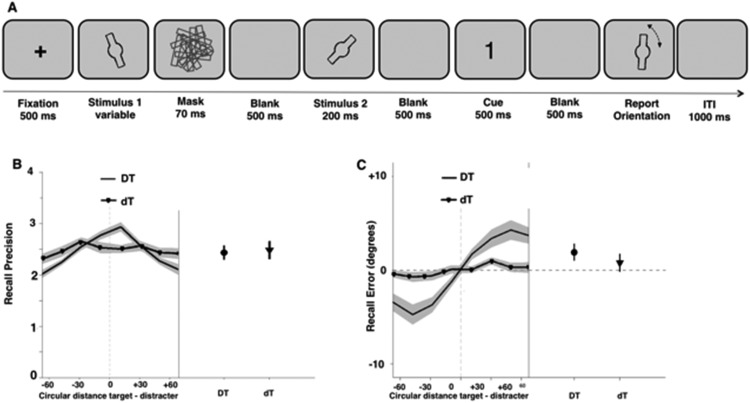Figure 4.
Design and results of the WM task used in Experiment 3. (A) A central fixation cross was presented for 500 ms followed by a first orientation stimulus, followed by a 70-ms mask. The presentation duration of the first orientation stimulus was varied to yield two conditions of equal probability: one in which the orientation was visible despite the mask and another in which the mask rendered the orientation stimulus invisible. After a 500-ms delay, the second orientation stimulus was presented for 200 ms (unmasked). This was followed by another 500-ms delay, and then by a 500-ms cue stimulus, which indicated to participants which orientation they had to report at the end of the trial. After a final 500-ms delay, participants reported the cued target orientation by matching the orientation of a probe stimulus with the cued orientation stimulus using the computer mouse. (B) Mean recall precision of cued orientation recall as a function of cued and uncued orientation similarity (left) and mean overall recall precision of cued orientation recall in Experiment 3 plotted for both conditions separately (N = 19). (C) Mean recall error as a function of cued and uncued orientation similarity in Experiment 3 plotted for the DT and dT condition separately (left), and mean overall recall error for the two conditions separately (N = 19).

